 Palamenco is a petroglyph site in the coastal area of Northern Peru. It has some special images, including an image of what I interpreted as a “shooting male”. This petroglyph is unique for Palamenco and possibly for Latin America as well. It is compared with more or less similar examples around the world.
Palamenco is a petroglyph site in the coastal area of Northern Peru. It has some special images, including an image of what I interpreted as a “shooting male”. This petroglyph is unique for Palamenco and possibly for Latin America as well. It is compared with more or less similar examples around the world.
By Maarten van Hoek
*
Palamenco
and the Unique Petroglyph of the Shooting Male
Maarten van Hoek
INTRODUCTION
A large part of the coastal strip of South America bordering the Pacific Ocean consists of extremely dry deserts and some more humid semi-deserts. This large arid area is also known as the Desert Andes, where – despite the barren and hostile natural circumstances – yet numerous important civilisations have emerged and declined. Because of the hostile environment fertility of crops and of humans played an important role in those coastal civilisations. Yet, at the countless rock art sites in the Desert Andes (mainly comprising petroglyphs) fertility-related images are relatively rare or at least ambiguous (Van Hoek 2012).
One of those rock art sites is Palamenco, an extensive petroglyph site which is located in the coastal area of northern Peru, NE of the town of Chimbote (Figure 1). For several reasons Palamenco is an exceptional site. Its extraordinariness not only concerns its location, but also and especially its imagery. In Part 1 the location and the site of Palamenco will be discussed, while in Part 2 a selection of several special Palamenco-images will be briefly discussed. Palamenco also has the petroglyph of a Shooting Male, which is – as far as I know – unique in Desert Andes rock art. This icon and several global parallels will be discussed in Part 3.
PART 1: PALAMENCO – THE SITE
Palamenco is a large, but isolated and hard to reach petroglyph site in northern Peru. It is located some 35 km to the NE of the Plaza de Armas in Chimbote (not 45 km to the east, as many web sites claim, for instance a webpage by the authority on Palamenco, Dr. Lorenzo Samaniego Román). The NW-SE arranged, linear site is found some 760 to 1120 m north of the Lacramarca River, which is part of the Santa drainage. The petroglyph complex comprises a zigzagging and slightly undulating concatenation of dry valleys, at the most 40 m in width, stretching for about 750 m roughly from the SE (at 650 m O.D.) to the NW (at 659 m O.D.). The entrance – which is marked by a large official sign (Figure 2) – is just south of the dry river bed of Quebrada Tantarán, which runs parallel to and just north of the Río Lacramarca in the same valley. When following the path from the entrance (Figure 3) to Sector A in the extreme NW corner of the site, the distance is about 1400 m.
Figure 1. A and B: Maps (A: dated 1894) showing the location of Palamenco. Drawings © by Maarten van Hoek, B: Map © by OpenStreetMap – Contributors.
All illustrations can be enlarged by clicking on them(click again to return).
Figure 2. The official sign at the entrance to the rock art site of Palamenco. Photograph © by Maarten van Hoek.
Importantly, this concatenation of petroglyph clusters is completely invisible from the valley of the Lacramarca River (valley floor opposite Palamenco at 600 m O.D.), as it is separated from the valley by a low ridge of red hills (its flat-topped summit at 662 m O.D.) running east-west for 4.3 km. Roughly 3 km north of the site low mountains reach a maximum height of 1235 m. For those reasons the views from the site are extremely limited. Only from the NW upper end of the site (from the “Plaza” at Sector A) one has some more extensive but still limited views across a small plain (pampa), simultaneously providing only sporadic glimpses of the Lacramarca Valley, which can be seen about 1500 m further SW.
Figure 3. The entrance to Palamenco. Photograph © by Maarten van Hoek.
The decorated boulders at Palamenco are of andesite, a green-grey (extrusive) igneous type of stone that over time develops a deep, dark patina that ranges from brown to purple and red. At Palamenco the dominant colour is dark-purple. The sizes of the petroglyph boulders vary enormously. There are very small decorated stones, almost flush with ground level, and enormous blocks of stone. Many large stones are decorated on several sides. What is also significant is that in most cases the purple boulders are set in a very bleak background of almost white sands (Figure 4). Also this red-white contrast expresses the ancient Andean concept of Yanantin, as explained by me earlier (Van Hoek 2015a).
Many parts of the concatenation of dry valleys are almost completely bereft of vegetation, which is understandable for a desert. Only some cacti and some bushes, small trees and grasses occur very sporadically. However, after the torrential rains of an El Niño the whole area may turn green because of the exploding vegetation. This happened for instance in 2017 at Palamenco and at many other rock art sites in northern Peru, but in general Palamenco is a very arid and bleak yet quiet and secluded zone.
No ceramic fragments or other artefacts were detected during my survey, but Dr. Samaniego showed us two small and empty tombs (which he explained to be from the local Santa Culture) on top of the red hill, SE of the site.
Figure 4. View of Palamenco. Looking NW across Group G towards Group A (invisible) in the distance. Photograph © by Maarten van Hoek.
Much of the imagery at Palamenco is very old. One of the most characteristic types of designs at Palamenco belongs to the MSC-Style. This acronym (introduced by me: Van Hoek 2011a) encompasses a limited array of typical Formative Period biomorphic images that have been created by the ancient Manchay, Sechín and Cupisnique cultures of the coastal area of central and northern Peru. This group of MSC-Style petroglyphs may be 2000 to 6000 years old. Many other images at Palamenco will be of the same date, although there is no evidence yet to support this claim (except for at least one petroglyph). Other images will be later and may belong to Salinar, Moche or even later cultures. Again, there is no proof to support any further absolute chronology.
The condition of the petroglyphs varies considerably. Several of the lighter petroglyphs clearly stand out against the darker background of the natural stone surface, even some of the ancient MSC-Style images. But many petroglyphs have weathered and eroded considerably, even beyond recognition, while some have even weathered or flaked off almost completely. Moreover, there are a few images (like the petroglyphs on Boulders PAL-018, PAL-020 and PAL-154) that have become completely patinated and thus are almost invisible. For that reason the petroglyph(s?) on Boulder PAL-020 escaped being noticed by previous researchers until I spotted very faint circles (a head?) during my survey in 2008. Also those deeply patinated petroglyphs may be extremely old. In several instances the natural shape of the rock has been utilised to manufacture specific images. Finally, because of its remote and isolated location, Palamenco has not suffered from vandalism.
*
History of Recording
The first rock art researcher who intensively surveyed Palamenco was the Cuban archaeologist Antonio Núñez Jiménez, who included a large section about the site in his book (1986: 493 – 560). In his book Núñez Jiménez lists 148 “Piedras” with petroglyphs at Palamenco, but in reality these entries only represent 118 “Piedras” in total, because he lists eight stones with two or more “Piedra”-numbers.
I have a photographic record of 192 boulders (several with two or more panels), while some 28 other boulders with (often only faintly visible) petroglyphs have been spotted by me in those photographs. As they have not individually been photographed by me, they are not included here. The (provisional) total therefore counts about 220 decorated boulders (285 panels), of which 111 boulders (not panels) have been surveyed by me, but have not been illustrated by Núñez Jiménez. The drawings of about 33 panels published by Núñez Jiménez have not been seen by me, but it is always possible that some of those 33 drawings belong to another rock art site, as is the case with his drawings of “Piedra” 69 (1968: Figs 1013 and 1014), which in fact illustrate the petroglyphs on one boulder from the rock art site of Checta, some 352 km to the SSE of Palamenco. The grand total may therefore count 279 boulders (220 + 28 + 31), although according to one of the small shields of the Santa University Palamenco counts as much as 285 boulders. I am certain that a full scientific survey of the whole area will reveal several new boulders with petroglyphs, perhaps also outside the area surveyed by me.
Palamenco is also included in the inventory by Rogger Ravines (1986: 11), but in fact he only very briefly referred to the book by Núñez Jiménez (1986). The text published by Ravines is duplicated by Rainer Hostnig in his inventory of the rock art of Peru (2003: 19). Hostnig also listed the petroglyph site of Lacramarca in the same valley (2003: 17). However – because I could not find any additional information about that site – this entry with the name of Lacramarca may in fact refer to the very site of Palamenco.
Invited by Mr. Fernando Avalos from Chimbote my wife Elles and I visited Palamenco in 2008, kindly assisted by Dr. Lorenzo Samaniego Román from the University of Santa, Chimbote (Figure 5). Based on our survey and the additional information available in the book published by Núñez Jiménez (1986), I estimate that more than 300 petroglyph boulders (and perhaps more than 5000 images) exist at this site. Although Dr. Samaniego informed me in 2008 that a complete inventory of Palamenco would be published by 2011, up to date (September 2021) there still is – as far as I know – no officially published inventory of this important site.
Figure 5. My wife Elles and Dr. Lorenzo Samaniego Román near Boulder PAL-109 (located at 8°52’56.29″S and 78°19’36.18″W). Photograph © by Maarten van Hoek.
Unfortunately, the numbering of the Palamenco boulders by Núñez Jiménez is not consistent and often incorrect (for instance regarding his Piedra 69). Therefore, and also because many of the small number-plates placed by the University of Santa near most stones have become illegible and because several petroglyph stones did not have such a shield, I have introduced my own numbering system (starting with PAL-001 etc), in which capital letters refer to the different panels where necessary (e.g. PAL-051A).
Based on 2008-survey and on Google Earth (Figure 6) I compiled a section of the location of Palamenco in the Lacramarca Valley and a map of the site indicating the individual decorated boulders with small squares together with my PAL-numbers (Figure 7). In several cases the decorated boulders are so closely packed that it was impossible to add the PAL-numbers in the general plan. Therefore I produced several detail maps (Groups) in which the PAL-numbers could be added. As I never worked with GPS it must be emphasised that the location of almost every boulder is only approximated. This also goes for the location of Boulder PAL-074 in Group C, the subject of this study (Figure 8).
Figure 6. Plan and section of the rock art site of Palamenco (as surveyed in 2008). Drawings © by Maarten van Hoek, based on Google Earth.
Figure 7. Plan of the rock art site of Palamenco (as surveyed in 2008), showing the PAL-numbers. Drawing © by Maarten van Hoek, based on Google Earth.
Figure 8. Location of Boulder PAL-074 (in the yellow oval) and its position in Group C. Photograph and drawing © by Maarten van Hoek.
*
Palamenco and Núñez Jiménez
A final word concerns the reliability of the drawings published by Núñez Jiménez (1986). I have convincingly demonstrated that possibly up to 25% of his illustrations is inaccurate, incomplete or even completely incorrect. This issue also concerns his drawings of Palamenco (Van Hoek 2011c: 61 – 74). The most manifest errors concern the drawings of his Fig. 985 (Figure 9), which proved to include a fine bird image; his Fig. 1085 (see Figure 11A), which proved to be a zoomorph eating a fruit; his Fig. 1065 (see Figure 12), which proved to be a much more complex MSC-Style creature and his Fig. 1089 (see Figure 14), missing a large bird’s head. In general many images have (seriously) been mis-interpreted by Núñez Jiménez, not only at Palamenco (Van Hoek 2020a; 2021a).
Figure 9. A and B: Petroglyphs on Boulder PAL-025. Drawings © by Maarten van Hoek, A: based on Núñez Jiménez (1986: Fig. 985).
Probably the most often photographed petroglyph at Palamenco concerns the MSC-Style anthropomorph on Panel PAL-001. However, especially its right leg and several other details (and details should matter enormously in any reliable rock art study) are incorrectly drawn by Núñez Jiménez (Fig. 1053; Figure 10A) and yet his incorrect drawing was re-published several times (Hostnig 2003: 19; Guffroy 1999: Fig. 35a; Guffroy 2008: Fig. 18.6 (inset); Guffroy 2009: Fig. 232, a photograph which has been digitally manipulated on purpose only to match the drawing by Núñez Jiménez [see Van Hoek 2011c: 64]; Támara Lázaro 2017: Fig. 6).
Figure 10. MSC-Style anthropomorphic petroglyph on Boulder PAL-001. Drawings © by Maarten van Hoek, A: based on Núñez Jiménez (1986: Fig. 1053).
Despite all my comments, I emphasise again that I do not at all criticise the person or the researcher of Núñez Jiménez. In fact I admire his painstaking research and respect him as a most dedicated rock art researcher. Unfortunately, too many of his illustrations are incorrect. Therefore, I only strongly object against uncritical reproduction of his graphic material by other rock art researchers. Only for that reason I published my 2011-book (freely available at ResearchGate), which is even out of date (i.e. incomplete) now (see for instance Van Hoek 2021a). Even after having published my 2011-book about Núñez Jiménez’ drawings, several rock art researchers continued to uncritically publish his often incorrect illustrations without acknowledging any possible incorrectness. It proves that some rock art researchers simply do not care to produce sound and reliable material (Van Hoek 2020b). Some academic researchers even intentionally (re)publish incorrect illustrations (for some alarming instances see Van Hoek 2020a: Figs 2A and 4A; 2020b: Fig. 1).
PART 2: PALAMENCO – PARTICULARITIES
INTRODUCTION
Although Palamenco is “just” one of the many hundreds of rock art sites in the Desert Andes, it is special for several reasons. First of all, it is one of the more isolated and – above all – hidden rock art sites of the Desert Andes. Although – for instance – the “nearby” petroglyph site of Santa Rita in northern Peru (see Figure 1) and the distant site of Ariquilda in northern Chile also may be categorised as isolated, they are not at all hidden. It seems that Palamenco is secreted on purpose; at least, prehistoric people may intentionally have selected Palamenco to become their Sacred Site because of the presence of numerous suitable boulders and – moreover – because those boulders are invisible from the Lacramarca Valley. Also the linear arrangement of the boulders may have had a special significance and meaning for the prehistoric manufacturers and the ancient visitors to the site, because the natural concatenation of the dry valleys provided a route suitable for rituals like rock art production, thus ritually charging the site.
Finally, I am certain that also the red-purple colour of the boulders at Palamenco (see Figures 4 and 5) attracted the prehistoric manufacturers. I argued earlier (Van Hoek 2015a) that the contrast and combination of the colour red (of the natural stone surface) and the colour white (of the freshly produced images) but also the contrast between the red-purple boulders and the almost white sands expressed a dichotomy symbolising the Andean death-life duality. And by manufacturing and accumulating their Sacred Images on those stones, the site became more and more ritually charged.
The Special Images of Palamenco
Like many other rock art sites in the Desert Andes Palamenco has its specialties. A specialty may concern a group of images that is special because of the graphical content and/or because of the relatively high numbers of the image. It also may concern a motif that occurs only once or twice, but which is found at several rock art sites around the globe. Other images are found sporadically repeated in rather large area in coastal Peru only. Finally, there are unique images that – as far as I can tell – are only found at Palamenco, one of which is the Shooting Male, which will be discussed in Part 3.
*
The Climbing Biomorph
One of the themes that is overrepresented at Palamenco are scenes involving the Climbing Biomorph. In most cases such a scene seems to depict a monkey with a (long) curled tail that is climbing a branch, which is often forked (Figures 11 and C to I). Even more special are the scenes where a monkey seems to be eating fruit (Figure 11A2) and the petroglyph of a monkey with two tails (Figure 11G). Another scene of a biomorph eating fruit may involve a viscacha (Figure 11B).
Figure 11. Petroglyphs of Climbing Biomorphs at Palamenco, Peru. Drawings © by Maarten van Hoek, A1 and B2 are based on the incorrect drawings by Núñez Jiménez (1986: A1 – his Fig. 1085 and B2 – his Fig. 1045).
At Palamenco there are at least 25 images (including five doubtful examples) of the Climbing Biomorph, but only three illustrations by Núñez Jiménez (1986) prove to have been correctly depicted as true ‘climbing biomorphs’ by him. But as many petroglyphs have been severely weathered (some petroglyph panels at Palamenco may even have been obliterated by [intentional, ritual?] hammering) or have been superimposed beyond recognition, there may be more examples than the examples that I recorded in 2008. Interestingly, the theme of the Climbing Biomorph is found at several more sites in the Desert Andes and beyond. For more information about the Palamenco Climbing Biomorph and several global parallels see Van Hoek 2015b.
*
MSC-Style Petroglyphs
The MSC-Style – an unbiased acronym introduced by me (Van Hoek 2011a) to indicate a distinctive group of biomorphic images or parts thereof – encompasses all Andean Formative Period rock art images that are too easily and – in my opinion (in most – if not all – cases) incorrectly – labelled as Chavín-Style images or even as being of Chavín manufacture. MSC-Style rock art images, which are predominantly (much) older than Chavín, are characterised by mainly biomorphic imagery (or very specific elements thereof) especially depicting the (often isolated) heads of zoomorphs and anthropomorphs (or conflations of the two) with an often agnatic mouth that repeatedly shows the typical ‘fat’ lip, downward curved mouth corners and prominent teeth and/or (interlocking) fangs, while the eyes often have eccentric pupils.
Unfortunately, Núñez Jiménez claims that all (?) petroglyphs at Palamenco are of Chavín origin (1986: 493), while it is almost certain that they have mainly been manufactured by the Cupisnique Cultures (Van Hoek 2011a). Moreover, several of the MSC-Style petroglyphs at Palamenco have incorrectly been drawn by Núñez Jiménez. Palamenco can boast to have one of the best MSC-Style petroglyphs of the Desert Andes. It is found on Boulder PAL-001 (see Figure 10), while on nearby Boulder PAL-002 is another fine and most complex example (Figure 12). But at Palamenco there are several more petroglyphs that display MSC-Style characteristics (see Van Hoek 2011a: Figs. 30, 32, 79, 84, 109, 110, 111, 127, 122A and 139).
Figure 12. MSC-Style petroglyph of a feline-fish (?) on Boulder PAL-002. The arrow indicates the actual slope of the panel. Photograph and drawings © by Maarten van Hoek, A: based on Núñez Jiménez (1986: Fig. 1065).
*
The Head with the Triangular Ears
The distinguishing element of this head-icon is that it has at least one ear (but more often it concerns two ears) that is/are (roughly) triangular in shape. The apex of the triangle is attached to the head-contour of the face, creating a most distinctive facade. At Palamenco only one example has been recorded so far (by Núñez Jiménez; 1986: Fig. 1093), but because I have not seen it during my survey, I cannot ascertain its correctness nor its provenance (Figure 13). The Head with the Triangular Ear has only been reported in coastal northern Peru, with an overrepresentation at the important rock art site of Chuquillanqui, about 150 km NNW of Palamenco (for more information see Van Hoek 2021b).
Figure 13. Petroglyph of a Head with Triangular Ears (at Palamenco?). Drawing © by Maarten van Hoek, based on Núñez Jiménez (1986: Fig. 1093; possibly incorrect).
*
Natural Features Emphasised
Palamenco also is noteworthy for its many petroglyphs that make use of natural features, such as holes or rock-edges. One of the most remarkable examples involves the head of a bird (probably a condor) that has been manufactured by emphasising the natural edges on Boulder PAL-121 (Figure 14). This practice occurs also at other sites in the Desert Andes. For more information on this theme see Van Hoek 2011b).
Figure 14. Petroglyphs on Boulder PAL-121. Photograph and drawings © by Maarten van Hoek. Drawing “1” based on the incomplete and inaccurate drawing by Núñez Jiménez (1986: Fig. 1089).
*
Pecked Triangles
Palamenco probably has also the majority of petroglyphs of pecked triangles in the Desert Andes. They (rarely) occur as an isolated triangle, while most pecked triangles occur in long rows, often arranged parallel to each other (Figure 15) or – in one case – encircling the edge of a smooth pillow-like boulder. For more information on this theme see Van Hoek 2018: Figs 11 and 12.
Figure 15. Petroglyphs on Boulder PAL-016. Photographs © by Maarten van Hoek.
*
The “Venus Cross”
A motif that occurs world-wide is the so-called “Venus Cross”, which in most cases involves a simple, equal-armed cross that is outlined (Figure 16). Palamenco has at least two or three examples (one – on Panel PAL-073A – is superimposed by an anthropomorph that seems to be missing a leg). However, this motif is found widely distributed across South America and the rest of the inhabited world (for more information on this theme see Van Hoek 2018).
Figure 16. Petroglyph of a “Venus Cross” on Boulder PAL-078. Photograph © by Maarten van Hoek.
*
Bicephalic Creatures
There are a few serpent-like petroglyphs at Palamenco that are bicephalic (Van Hoek 2020c: Fig. 71), while one petroglyph (on Boulder PAL-083 and now almost weathered off) may represent a bicephalic face (Figure 17). However, one bicephalic biomorph on Boulder PAL-137 is of great interest. It clearly depicts a bicephalic bird (Figure 18). This bird image – unique in the rock art of the Desert Andes – probably is very old as it may be compared with – and possibly is related to – a ‘similar’ design on a fragile textile fragment from La Galgada (Figure 18A; mirrored by me to match the petroglyph), a Formative Period temple complex located only 50 km NNE of Palamenco and also in the Santa Drainage.
Figure 17. Petroglyphs on Boulder PAL-083. Photograph and drawing © by Maarten van Hoek, drawing based on Núñez Jiménez (1986: Fig. 1004).
Figure 18. Petroglyph on Boulder PAL-137. A: Textile from La Galgada (mirrored by me). Photograph and drawings © by Maarten van Hoek; A: based on an illustration by Richard Burger (1992: Fig. 23).
*
The Possible Octopus
Although images of octopuses occasionally occur in the iconographies of coastal civilisations of the Desert Andes, for instance and especially in Moche imagery, petroglyphs unambiguously depicting the octopus are absent. However, one petroglyph at Palamenco just possibly might depict an octopus, or at least its tentacles. It is found on Boulder PAL-178. It depicts an equal-armed cross with a distinct curl at each arm-end (Figure 19A). Interestingly, Donald Proulx argues that a Nasca double-spout ceramic – said to possibly be from the Ocoña Valley in southern Peru, 970 km SE of Palamenco – is modelled in the form of an octopus (Figure 19B), even though – so he added – only four tentacles are depicted (2007: 9). Also in Cupisnique and Moche iconographies, octopuses sometimes have four (or six) arms only. For those reasons, this Palamenco petroglyph could symbolise an octopus as well. Finally, despite being located rather close to the coast (very rich in marine life), petroglyphs unambiguously depicting marine-related images like fish are absent at Palamenco, although on Panel PAL-046C a row of curls could represent sea-waves (an El Niño?).
Figure 19. A: Petroglyph on Boulder PAL-178 at Palamenco. B: Nasca ceramic (seen from above). Photograph and drawing © by Maarten van Hoek; B: based on an illustration by Donald Proulx (2007).
To start with, it is remarkable that unambiguously male anthropomorphic figures are relatively rare in Desert Andes rock art, especially in the north of coastal Peru. The majority of the ‘male’ anthropomorphs in Desert Andes rock art only have a short, vertical line between the legs, which is commonly regarded to represent a flaccid phallus. Figures with both a phallus and testicles are rarer and anthropomorphic images with an erect phallus are even extremely rare in Desert Andes rock art. And as far as I know a rock art image that depicts an anthropomorphic figure with an erect phallus that is emitting something occurs only once in Desert Andes rock art. However, regarding any emission emerging from a phallus in rock art, it must be emphasised that it is almost always impossible to establish whether the male figure is ejaculating or urinating. Hence the more unbiased title of this study: the Shooting Male. Still, in view of the enormous importance of fertility in this barren desert, it is more plausible that ejaculating will have been intended, not urinating.
Also at Palamenco petroglyphs of anthropomorphic figures have been recorded, but not many. Moreover, there are only three figures that are apparently male. On Boulder PAL-028 is a frontally depicted figure that seems to have a flaccid phallus between its legs (Figure 20A), while the mirror-like feature on the thorax of the anthropomorph (warrior?) on Boulder PAL-072 in Group C (for its location see the map in Figure 8) has a “handle” that may represent a phallus (Figure 20B).
Figure 20. A: Petroglyph on Boulder PAL-028; B: Petroglyph on Boulder PAL-072. Photographs © by Maarten van Hoek.
A third and most intriguing example of a phallus – evidently erect – occurs on Panel PAL-074B at Palamenco. This phallus is part of the Shooting Male petroglyph, the topic of this study. This boulder is found in Group C (see Figure 8) at 656 m asl (at approximately 8°52’54.63″S and 78°19’34.33″W in Google Earth 2019). On this boulder is a petroglyph of a large, clearly pecked zoomorph (a camelid or a deer?), while lower down is a much smaller anthropomorph executed in profile with only one arm that is raised in front of the head (Figure 21). The legs have either weathered off or have never been executed.
Most remarkable however is a large, outlined appendage (larger than the small anthropomorph) that emerges from the genital area of the anthropomorph. It therefore may represent an erect phallus. More intriguing however, are the four thinly pecked, long and parallel lines that emerge from the top of the alleged phallus (Figure 22). This group of lines (representing an ejaculation?) continues upwards in front of the zoomorph (on purpose?) and then curve slightly to the left. Just below the emission a triangular motif is faintly visible, which just possibly might represent a vulva, thus possibly creating a fertilising configuration. This possible scene is definitely no instance of recent vandalism. First of all, the anthropomorphic petroglyph is definitely old. Moreover, especially the thin, parallel lines are barely visible because they are almost fully patinated. Recent vandalism would stand out much more clearly. Possibly for this reason this “Shooting Male” was not noticed by Núñez Jiménez on his Piedra 10 (1986: Fig. 956). However, it must be emphasised that patination is no measure of absolute or relative dating, as – especially in deserts – patina (or dessert-varnish) may develop rather quickly. However, the zoomorphic petroglyph on the same panel (possibly a Formative Period image!) is not so much patinated and thus the ejaculation scene may be very old as well.
Figure 21. Location of Boulder PAL-074 looking SE with our host Fernando Avalos in the background. Photograph © by Maarten van Hoek.
Although it is impossible to absolutely date this specific petroglyph (based on its layout the zoomorph on the same panel may be from the Formative Period, though), especially the exaggerated size of the phallus and the possible ejaculation markings on Boulder PAL-074 may point to a (Southern) Moche origin. Importantly, Palamenco is located well inside the territory of the Southern Moche. The important Moche ceremonial centres of Huaca del Sol and Huaca de la Luna in the Moche Valley are found only 110 km to the NW of Palamenco, while Southern Moche influence extended as far south as the Huarmay Valley, 135 km SSE of Palamenco.
Figure 22. Boulder PAL-074. Photograph and drawing © by Maarten van Hoek.
The Moche (200 to 850 A.D.) are especially known for the sexually explicit scenes on their ceramics. The portrayal of the – often grotesquely exaggerated – phallus was particularly popular. Several Moche ceramics poured their liquid via the erect phallus of the male; mimicking ejaculation? Directly drinking from such a bottle simultaneously imitates the act of fellatio. Moche sex scenes also often involved the participation of skeletal figures, symbolising the Andean life-death duality (Van Hoek 2019b). Many of the erotic ceramic vessels are phallic-shaped and especially ceramics depicting masturbating males were popular among the Moche elite. Those masturbating males were also thought to be the personifications of fertility. Is the figure on Boulder PAL-074 also masturbating? In fact, the phallus and the ejecting lines could well have been a later (Moche?) addition, possibly added in order to depict masturbation, although the only hand of the figure is actually not touching the phallus. If not fertility related, the scene on Boulder PAL-074 may possibly be an individual sign of humour, perhaps even a personal act of rebellion (against an authority and/or some sort of taboo?).
As I said, I do not know of any other rock art image of a masturbating or ejaculating anthropomorph in the Desert Andes (and yet they may exist). Moreover, in the remainder of South America only very few rock art images seem to depict masturbation (none showing an ejaculation, though). I could only find two areas where rock art images possibly depict masturbation (and again, there may be more). The first area is the valley of the Río San Juan del Oro, Chuquisaca, southern Bolivia. At the rock art site of La Fragua (1973 km SE of Palamenco and in the High Andes, at 2450 m) Carlos and Lilo Methfessel recorded a panel with a large anthropomorph wielding a large (ceremonial?) axe. It is surrounded by three scenes of sexual activity. Scene 2 and (flaked) Scene 3 are “supervised” by a smaller anthropomorph with a (ceremonial?) axe, so it seems (Figure 23). Scene 1 however may be interpreted as a masturbating scene, although it possibly is an unfinished copulation scene. Like the Palamenco scene, this collection of sexual acts seems to be exceptional for this area as well.
Figure 23. Rock panel at La Fragua, San Juan del Oro, Bolivia. Drawing © by Maarten van Hoek , based on a drawing by Françoise Fauconnier (in: Fauconnier et al. 2017: Fig. 12b).
The second area concerns the rock art group in the Seridó Region of NE of Brazil (roughly 3570 km NE of La Fragua and 4695 km east of Palamenco), where Gabriela Martin and Irma Asón recorded several rock paintings that unambiguously depict several types of sexual scenes, including (ritual?) rape and coitus (2000: Figs 15 and 16). In several scenes the phallus and the vulva have been depicted exaggeratedly. Interestingly, at least four of those scenes seem to depict male figures that are masturbating, although (again) there is no sign of any male shooting (Figure 24). Notice that the wide open mouths of two figures (and several other male and female anthropomorphic figures in the area) may symbolise sound; perhaps even screaming of excitement (or anguish, in case of rape).
Figure 24. Rock paintings at Parelhas and Carnaúba dos Dantas, Seridó, NE Brazil. Drawings © by Maarten van Hoek, based on drawings by Gabriela Martin and Irma Asón (2000: Figs 15 and 16).
*
Emissions in Global Rock Art
In normal life mammals occasionally emit all sorts of substances. However, it is remarkable that in rock art such emissions are only rarely depicted. Still, the following types of emission may have been depicted in rock art imagery: defecating (more information in Van Hoek 2020d), urinating, ejaculating, spitting, (nose) bleeding, menstruating, lactating, shedding tears and even water-spouting by whales (for instance, petroglyphs at Pegtymel in NE Siberia and at Daegok-ri in the Korean Peninsula).
Unfortunately, it is not always certain what type of emission has been depicted by the prehistoric manufacturer. To complicate things further, it is even possible that the prehistoric manufacturer of a rock art image visualised something invisible, like sound or exhaling. Fine examples of this possibility are found at several sites in southern Texas, USA, where several pictographs of zoomorphs and anthropomorphs seem to speak or breath (Figure 25). This phenomenon has been discussed in depth by Carolyn Boyd and Ashley Busby (2021). They also discussed the Meso American speech-scroll, a curved motif in front of the mouth, which was used (but as far as I know not in local rock art) to indicate that a person is speaking. In my opinion, sound or speech is not necessarily made explicitly visible in rock art. Above I discussed several rock paintings from NE Brazil depicting male and female figures engaged in sexual activity. They often have been portrayed with a wide open mouth, as if screaming in excitement or anguish (see Figure 24).
Figure 25. Pictographs from A: High Country Shelter, Texas; B: Parida Cave, Texas; C: Halo Shelter, Texas. Drawings © by Maarten van Hoek, all based on photographs by the Shumla Archaeological Research & Education Center, Comstock, Texas.
In South America there are only a few icons that seem to be emitting a substance. Well known are the hundreds of “Dancer” petroglyphs of Toro Muerto and Alto de Pitis in the Majes Valley of Southern Peru (Jennings, Van Hoek, et al. 2019: Fig. 5a). Their most indicative characteristic are the tear-like elements emerging from their eyes (Figure 26A). At the same sites in Majes are petroglyphs of zoomorphs that I have labelled “Spitters” because of the lines or drops emitting from the mouth (Figure 26B; notice that these “Spitters” also have “tears”). Yet the markings emitted from the mouth of “Spitters” could well represent sound, especially as in Majes there are also petroglyphs of mammals that seem to be howling or barking with an open mouth. None of the numerous anthropomorphic petroglyphs in the Majes Valley seems to be ejaculating, although there is one instance where a long line (ejaculation or menstrual blood or something else?) emerges from the genital area of an anthropomorphic figure to end as the right arm (without a hand!) of the figure (Van Hoek 2012: Fig. 8). On a very large boulder at Toro Muerto in the Majes Valley a frontally depicted bird that – instead of a tail – seems to be emitting a substance that is “captured” by a “Carcancha”, a Skeleton-Anthropomorph. My interpretation is that the bird and its emission symbolises rain (which means life), while the Skeleton-Anthropomorph represents death (Van Hoek 2019b). The whole scene therefore may symbolise the well-known Andean life-death duality.
Figure 26. A: “Dancer” petroglyphs; B: “Spitter” petroglyphs, both from Toro Muerto, Majes valley, southern Peru. Drawings © by Maarten van Hoek.
Finally, South American camelids are known for their aggressive spitting. This act may have been depicted in rock art scenes, however in only a (remarkably) few instances. Some fine rock art paintings that seem to depict spitting camelids have been reported by Rainer Hostnig at the rock art site of Iglesiamachay in the High Andes of southern Peru (2012: Fig. 30; Figure 27), although Hostnig (because of the colour red of the pictograph; 2012: 54) interprets the emission as blood: “Camélido probablemente herido, con sangre brotando de la boca.” (2012: Fig. 32). Yet, these two camelids do not seem to have been hit by a spear or an arrow and may therefore be spitting after all. In one case a rock art painting (at the Río Loa, northern Chile) of a copulating male camelid may involve invisible sound because of the wide open mouth (Van Hoek 2012: Fig. 165).
Figure 27. Pictographs of possibly spitting camelids from Iglesiamachay, southern Peru. Drawings © by Maarten van Hoek, based on illustrations by Rainer Hostnig (2012: Figs 30 and 32).
*
Ejaculation in Global Rock Art
Although in normal life the most commonly emitted substances by mammals are urine and droppings, rock art images of defecating zoomorphs are rare nonetheless and – surprisingly – are mainly found in the Central Sahara of northern Africa (Van Hoek 2020d), while unambiguous depictions of urinating zoomorphs are even much rarer than images of defecating mammals (an example of a possibly urinating zoomorph is found at Holbrook, Arizona, USA). Unlike urinating and defecating, male mammals (thus also male humans) do not ejaculate on a daily basis. Yet there are images in rock art that possibly depict ejaculation, although – in case of male mammals – there always is some doubt, as the image may then depict urinating instead.
Figure 28. A and B: Petroglyphs from Western Australia (in case of Figure B only the better visible petroglyphs have been drawn by me). Drawings © by Maarten van Hoek; based on photographs by Jeremy Storey (Flickr).
The same element of doubt concerns the difference between ejaculation and menstruating. For instance, a single line from the genital area of an anthropomorphic rock art image may symbolise ejaculation or menstruation. Only when unambiguous sexual indications are present, it is possibly feasible to establish the nature of the emission. Many fine petroglyphs of possibly menstruating female figures are found in Western Australian rock art. Even in cases where only one line is indicated, the line may well indicate menstruation (Figure 28A), as those menstruating figures have breasts and clearly indicated female sexual organs from which the line(s) emerge. A complex scene from Abydos (230 km inland from the Dampier rock art complex on the Indian Ocean coast) however clearly shows two male figures that are ejaculating (Figure 28B). The lines from their phalluses continue to the vulvas of three clearly female figures, thus inseminating them. It must be emphasised here however that lines in Australian Aboriginal rock art may symbolise something else, like power lines, energy lines or song lines. Interpreting Aboriginal rock art is in general notoriously difficult and thus even the one single line in such anthropomorphic figures may have a completely different symbolism than thought by western researchers. Interestingly, also in other areas across the world copulation-scenes in rock art occasionally involve long connecting lines that possibly symbolise ejaculation. Examples occur in the southwest of the USA (Slifer 2000: 55) and at Tyout, Algeria (Van Hoek 2019a: Fig. 54A and B) and at the rock art site of Har Salaa in the Altai Mountains (Van Hoek 2019a: Fig. 55A).
It now proves that rock art images of anthropomorphs performing an ejaculation are extremely rare in global rock art, while – moreover – instances often remain ambiguous, as there is often no way to establish whether urinating, menstruating or indeed ejaculating has been depicted. Yet some examples in global rock art may depict ejaculation.
In some instances rock art images of clearly phallic anthropomorphic figures have one or a few “drops” in front of (or below) the phallus, like the enigmatic petroglyph of a large anthropomorph recorded by Alain Rodrigue at Yagour, High Atlas, southern Morocco. The larger figure seems to fertilise a much smaller figure with a phallus (?) strangely emerging from the ‘right’ side of his body. The two dots in front of the purported phallus could symbolise semen (Figure 29A). Also the large petroglyph of a “Carcancha” (a Skeleton-Anthropomorph) recorded by Alain Rodrigue at Yagour has a single drop below its grossly exaggerated phallus (Figure 29B). If indeed this cupule was intended to symbolise semen, then this feature simultaneously enhances the life-death duality of this “Carcancha” (Van Hoek 2019b). At Telouet, a minor rock art site further east in the High Atlas, is the petroglyph of a Skeleton-Anthropomorph that has a line from the top of its phallus. This line might symbolise an ejaculation and could also have been intended to express the life-death duality (Figure 29C).
Figure 29. Petroglyphs of possibly ejaculating anthropomorphs from the High Atlas, Morocco. Drawings © by Maarten van Hoek, based on drawings by Alain Rodrigue (1999: 240; 346 and 390).
Further east, in the central part of the Sahara, are several rock art images involving male anthropomorphic figures with sexual organs of “normal” sizes, but also several scenes involving anthropomorphs with grossly exaggerated male genitals (Soleilhavoup 2003). However, only very few of those exaggeratedly depicted male genitals also seem to involve ejaculation. One petroglyph of a “bizarre” scene (subjective term) recorded in the Wadi Djerat (northern Tassili) depicts the coitus between two therianthropes (Figure 30C), in which a short line from the grossly exaggerated phallus may symbolise an ejaculation (Soleilhavoup 2003: Fig. 36). At the rock art site of Ti-Haramiwin in the northeast part of the Tassili are the petroglyphs of two clearly male confronting anthropomorphic figures (Figure 30A). Both have an exaggerated phallus that seems to be ejaculating; one onto the body of the other (Gauthier 2008: Fig. 9). Another scene of a “bizarre” coitus is found at the petroglyph site of Ti-n-lalan in the massif of Tadrart Acacus, Libya. It involves a therianthrope with an enormous phallus from which a long, fully pecked “cloud” emerges – an ejaculation? -, which seems to penetrate the open vulva (a natural hole) of a recumbent petroglyph of a female (Soleilhavoup 2003: Fig. 34). On the same enormous vertical panel are more grotesque coitus scenes. In the Wadi Ti-n-Sharuma of the Messak Settafet, Lybia, Francois Soleilhavoup (2007: Fig. 7) recorded the petroglyph of a coitus between two humans, which – according to Soleilhavoup – ‘… is shown under the (symbolic?) regard of a dog, with realism going as far as ejaculation that could be represented by three small cupulas (three very short lines, rather?) above the gland’. Soleilhavoup also remarks that such a scene is very uncommon in the Messak.
Figure 30. Rock art images of sexual scenes from the Central Sahara. Drawings © by Maarten van Hoek; based on A: Gauthier (2008: Fig. 9); B: Allard-Huard (1993: Fig. 72.3); C: Soleilhavoup (2003: Fig. 36).
At Oued Afar, Algeria, is the petroglyph of an archer shooting at a hippopotamus (Campbel and Coulson 2010: Fig. 4). The archer has a large phallus from which a short line emerges; an ejaculation? This scene may confirm a global relationship between hunting and fertility. At the same site is an isolated phallus petroglyph, also with a similar short line emerging from the top (Campbel and Coulson 2010: Fig. 2).
Finally, Léone Allard-Huard relates of the petroglyph of an incised (female?) rhinoceros, recorded in the Oued Djerat in the northern part of the Tassili, Algeria, on which a pecked therianthrope flashing a grotesque phallus seems to be “sitting”; a later addition (1993: Fig. 72.3). From the phallus a thin line emerges (re-drawn by me in red in Figure 30B). Allard-Huard argues that the sitting figure ‘ejaculates into the rhino’s eye, which is a way of giving practical expression to the idea that the Hunters controlled the animal world’ (1993: 253).
Further east, a petroglyph site at Har Karkom (a Sacred Mountain in Israel), features a clearly male archer who seems to having an ejaculation while hunting an ibex (Mailland and Bastoni 2016: Fig. 4; Figure 31D). Again, in general there seems to be a convincing correlation between hunting with a bow-and-arrow and human and animal fertility in several areas across the globe (Van Hoek 2019a). There are also petroglyphs in the Negev Desert of Israel of a dog sniffing the bottom of an ibex. It is said by Yehuda Rotblum (nd) that by sniffing the ibex the dog symbolically entices the ibex to ejaculate sperm, as is sometimes shown by the spray of semen underneath the phallus of the ibex. He further argues that such scenes may thus be regarded to emulate land fertilisation.
At the rock art site of Kalbak Tash in the Russian Altai Mountains of Central Asia (Figure 31A) there is a petroglyph of a (possibly?) ejaculating archer who is aiming at or shooting a woman. In another publication I tentatively suggested that the typical skeleton-like appearance of the female figures at Kalbak Tash symbolises a life-death duality, a general concept, which is seen in so many rock art images across the world (Van Hoek 2019a). An almost similar scene has been recorded by Ekaterina and Marianna Devlet at the rock art site of Bajan Lig (Bayanlig) in the Altai Mountains of southern Mongolia (2005: Fig. 129-2). Also in this case the archer is clearly phallic, while two short lines ‘dropping from?’ his phallus may indicate an ejaculation, while watching a copulating couple (Figure 31B).
Figure 31. All drawings © by Maarten van Hoek. A: Petroglyphs from Kalbak Task, Russian Altai Mountains, based on Kubarev 2011: Fig. 54.8. B: Petroglyphs from Bajan Lig, Russian Altai Mountains, based on Devlet and Devlet 2005: Fig. 129-2. C: Pictograph from Oregon, USA, based on an illustration by Loring and Loring 1996. D: Petroglyph from Har Karkom, Israel, based on an illustration by Mailland and Bastoni 2016: Fig. 4.
Despite the many phallic rock art images that have been recorded in the rock art of Europe, unambiguous ejaculation scenes are extremely rare or absent. Emmanuel Anati interprets the petroglyph of one figure in a scene at Foppe di Nadro, Valcamonica, northern Italy (2008: 33) as a male who is possibly ejaculating. However, in my opinion this is not at all certain, as it seems that the configuration more likely represents a copulation scene only.
The rock art of the Coa Valley in northern Portugal is well-known for its many incised and pecked petroglyphs. Most images concern mammals, but at the upper sector of Rock no. 2 of Ribeira de Piscos is the incised outlined figure of an anthropomorph with apparently a very large phallus; the whole superimposed upon earlier petroglyphs (not shown in Figure 32). This very old petroglyph (said to be from the Upper Palaeolithic) is said by Guy Cox and Brian Morris to represent a man with long (phimotic?) prepuce in the act of solo ejaculation, presumably through masturbation (Cox and Morris 2012: Fig. 21-4), although also this figure does not touch the phallus (like the Palamenco petroglyph).
Figure 32. Petroglyph from Ribeira de Piscos, Coa Valley, Portugal. Drawing © by Maarten van Hoek, based on an illustration by Luís Luís (2012 Fig. 21-4).
On the North American continent are also numerous rock art images depicting phallic anthropomorphic figures (especially the numerous “Kokopelli” figures). But as far as I know, none of the North American anthropomorphic rock art figures seems to be ejaculating, although there are some rock art images that may depict masturbation. For instance, at La Cieneguilla, New Mexico, two petroglyphs of anthropomorphs (with possibly zoomorphic attributes) have a grossly exaggerated phallus that is held by two hands thus possibly depicting masturbation (Figure 33).
Figure 33. Petroglyphs from La Cieneguilla, New Mexico. Drawings © by Maarten van Hoek, based on drawings by Dennis Slifer (2000: Figs 20m and n).
In the USA I know of only one possibly unique pictograph scene that depicts a male figure who seems to be ejaculating in conjunction with a female figure. On the south bank of the Columbia River (and thus in the state of Oregon) is a petroglyph site called Hook (now submerged). About 300 yards south of the petroglyph site in the river and on an east facing panel was another site with a rock painting scene. Malcolm and Louise Loring photographed two anthropomorphic figures, both apparently showing eyes. The smaller figure displays the same typical head-shape as other purported female figures in the area (Van Hoek 2016). Her arms are outstretched with wide open hands; a most perceptive position. The other figure shows a clearly different head-shape, but, most importantly, it is a male figure as it has a clearly erect phallus that moreover is pointing to the female figure (see Figure 31C). A small dot of paint is ‘floating’ between the two figures, which may symbolise ejaculation (the dot between the legs of the female figure probably is a small natural hole, which may have been included on purpose). Finally, the arms of the male figure touch the belly area of the female, possibly expressing the wish for pregnancy as well.
Conclusions
Despite the subtle subtitle of this study one can never be confident that indeed a rock art image is indeed unique or that a theme is absent. Future surveys may reveal one or more similar images, or one may simply have overlooked analogous images in published material. For instance, in an earlier publication about polycephaly in rock art, I wrote that I was not aware of rock art images of female kangaroos with a juvenile peeping out of the pouch having been depicted in Aboriginal Australian rock art (2020c: 11). However, about a year later I found a reliable photograph of such a configuration on the internet. It concerned a petroglyph on Panel HI190C at Hillside Station, Pilbara, Western Australia (about 300 km ESE of Dampier on the coast, which is one of the most extensive rock art groups of the continent), which unambiguously showed a juvenile kangaroo in the pouch. The photo proved me wrong and for that reason terms like “absent” or “unique” are sometimes premature. Even the term “unambiguous” may be incorrect, as it is often based on the interpretation of a (possibly non-informed or ill-informed) western researcher.
Yet – based on this study – it may be stated that scenes unambiguously depicting masturbating male figures are extremely rare in global rock art. In most cases there is no informed knowledge that confirms the hypothesis, like with the possible masturbating scenes on Panels PI18 and PI280A at the rock art site of Pilga, Pilbara, Western Australia (285 km east of Dampier on the Pacific Indian coast). However, in both cases there is no emission of any substance and thus something else may have been intended.
Nevertheless, the possibly ejaculation scene on Panel PAL-074B at Palamenco is – as far as I know – unique for Desert Andes rock art and (except for the possible Moche ceramic context) consequently there is no graphic rock art context that might explain the nature of the configuration or might confirm that the two elements (the anthropomorph and the erect phallus) have simultaneously been manufactured. In contrast, the petroglyphs of Pilbara, Western Australia, that are mentioned in this study are only a few of a very large collection of petroglyphs depicting males with – often exaggerated – phalluses, females with – often exaggerated – vulvas, copulation scenes (actual scenes and scenes involving long connecting lines) and other clearly sex- or fertility related images. The Pilbara scenes thus more likely depict masturbating. Concluding, the precise nature of the Palamenco Shooting Male will remain obscure, but whatever its origin and meaning, it no doubt represents a fascinating rock art image. Perhaps it will always remain a unique scene, whether it is prehistoric or not.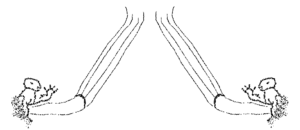
Acknowledgements
The author is most grateful to Mr. Fernando Avalos from Chimbote for inviting my wife Elles and me to Chimbote and for coordinating our visit to Palamenco in 2008. He also arranged that we were professionally assisted by Dr. Lorenzo Samaniego Román, archaeologist from the University of Santa, Chimbote, who visited Palamenco several times. On-site Dr. Samaniego also provided some most useful additional information. We are also grateful for our usual chauffeur Oscar who drove all the way up from Pisco to take us to Palamenco and back to Lima the next day.
References
Allard-Huard, L. 1993. Nil-Sahara: Dialogues Rupestres. I – Les Chasseurs. Divajeu, France.
Anati, E. 2008. The way of life recorded in the rock art of Valcamonica. Adoranten. pp. 13 – 35.
Boyd, C. E. and A. Busby. 2021. Speech-Breath: Mapping the Multisensory Experience in Pecos River Style Pictography. Latin American Antiquity; pp. 1 – 21.
Burger, R. 1992. Chavín and the origins of Andean civilization. London.
Campbel, A. and D. Coulson. 2010. Big Hippo Site, Oued Afar, Algeria. Sahara. Vol. 21; pp. 81 – 92.
Cox, G. and B. J. Morris. 2012. Why Circumcision: From Prehistory to the Twenty-First Century. In: D. A. Bolnick et al. (eds.). Surgical Guide to Circumcision. Springer-Verlag London.
Devlet, E. G. and M. A. Devlet. 2005. Мифы в камне: Мир наскального искусства России. Москва.
Fauconnier, F., M. Strecker and L. Methfessel. 2017. Representaciones de objetos de metal en el arte rupestre del Sur de Bolivia. Boletín SIARB. Vol. 31; pp. 34 – 57. La Paz, Bolivia.
Gauthier, Y. and C. Gauthier. 2008. Art rupestre, monuments funéraires et aires culturelles: nouveaux documents concernant le Messak, le Sud-Est du Fezzân et l’Oued Djerat. Cahiers de l’AARS. Vol. 12; pp. 1 – 16.
Guffroy, J. 1999. El Arte Rupestre Del Antiguo Peru. IFEA. Lima, Perú.
Guffroy, J. 2008. New research into rock art in Peru. In: Rock Art Studies – News of the World; Volume 3; Chapter 18. Eds. Natalie R. Franklin and Matthias Strecker. Oxbow Books
Guffroy, J. 2009. Imagenes y paisajes rupestres del Perú. USMP-IRD, Lima, Perú.
Hostnig, R. 2003. Arte rupestre del Perú. Inventario Nacional. CONCYTEC, Lima, Perú.
Jennings, J., M. van Hoek, W. Yépez Álvarez, S. Bautista, R. A. San Miguel Fernández and G. Spence-Morrow. 2019. Illomas: the three thousand year history of a rock art site in Southern Peru. Ñawpa Pacha, Journal of Andean Archaeology. Vol. 39-2; pp. 1 – 31.
Kubarev, V. D. 2011. The petroglyphs of Kalbak Tash – 1 (Russian Altai). The Institute of Archaeology and Ethnography Press. Novosibirsk.
Loring, J. M. and L. Loring. 1996. Pictographs & Petroglyphs of the Oregon Country; Parts I & II. Monographs 21 and 23. Institute of Archaeology, University of California, Los Angeles, USA.
Luís, L. 2008. A Arte e os Artistas do Vale do Côa. Fundação Côa Parque. Parque Arquelógico do Vale do Côa.
Mailland, F. and R. Bastoni. 2016. The Har Karkom plateau as an open-air worshipping place during Chalcolithic and Bronze Age. Revista Santuários, Cultura, Arte, Romarias, Peregrinações, Paisagens e Pessoas. Valcamonica, Italy.
Martin, G. and I. Asón. 2000. The Nordeste Horizon in Brazil’s Rock Art. Anais da X Reuniáo Scientífica da SAB; pp. 110 – 134.
Núñez Jiménez, A. 1986. Petroglifos del Perú. Panorama mundial del arte rupestre. 2da. Ed. PNUD-UNESCO – Proyecto Regional de Patrimonio Cultural y Desarrollo, La Habana.
Proulx, D. A. 2007. An analysis of Nasca pottery from the Department of Arequipa, Peru. Paper originally presented to the 19th Northeast Conference on Andean Archaeology and Ethnohistory. Dartmouth College, University of Massachusetts.
Ravines, R. 1986. Arte Rupestre del Perú. Inventario General. INC. Lima, Perú.
Rodrigue, A. 1999. L’art rupestre du Haut Atlas marocain. Paris. L’Harmattan.
Rotblum, Y. nd. Astronomy and Myth in Negev Desert Rock Art. Deciphering Rock Art from Negev Desert, Israel.
Slifer, D. 2000. The Serpent and the Sacred Fire. Fertility images in Southwest rock art. Museum of New Mexico Pres. Santa Fe.
Soleilhavoup, F. 2003. Images sexuelles dans l’art rupestre du Sahara. Sahara. Vol. 14; pp. 31 – 48.
Souleilhavoup, F. 2007. Rock art investigations in the Fezzan, South-West Libya. Inora. Vol. 49; 1 – 9.
Támara Lázaro, A. L. 2017. Las representaciones pictográficas formativas de Macashca – Huaraz, región Ancash. Thesis. Universidad Nacional Santiago Antúnez de Mayolo.
Van Hoek, M. 2011a. The Chavín Controversy. Rock Art from the Andean Formative Period. Oisterwijk, Holland. Book available at ResearchGate.
Van Hoek, M. 2011b. Andean rock art and apophenia: from the macro to the micro. In: Rupestreweb.
Van Hoek, M. 2011c. Petroglyphs of Peru – Following the Footsteps of Antonio Núñez Jiménez. Oisterwijk, Holland. Book available at ResearchGate.
Van Hoek, M. 2012. Rumimantam Llaqllasaq Wirpuykita: The ‘Cycle of Life’ in the Rock Art of the Desert Andes. Oisterwijk, Holland. Book available at ResearchGate.
Van Hoek, M. 2015a. Andean Petroglyphs and Yanantin. The Case of El Olivar, Ancash, Peru. In: Rupestreweb.
Van Hoek, M. 2015b. “Climbing Biomorphs” in Andean Rock Art and Beyond. In: Rupestreweb.
Van Hoek, M. 2016. It’s all about the head: Morphological basis for cephalic differences in male and female anthropomorphic imagery in Desert Andes rock art. In: Expression. Vol. 11; pp. 76 – 81. PDF available at Academia.
Van Hoek, M. 2018. Possible Indications for Long Distance Diffusion of Rock Art Motifs in the Americas. In: TRACCE – Online Rock Art Bulletin, Italy.
Van Hoek, M. 2019a. The Book of Bows – The Archer in Desert Andes Rock Art. Oisterwijk, Holland. Book available at ResearchGate.
Van Hoek, M. 2019b. The Book of Bones – “Carcanchas” in Global Rock Art. Oisterwijk, Holland. Book available at ResearchGate.
Van Hoek, M. 2020a. Enfrentando los dibujos… ¡otra vez! (Perú); Confronting the Drawings … Again! (Peru). In: TRACCE – Online Rock Art Bulletin, Italy.
Van Hoek, M. 2020b. False Information Concerning Majes Rock Art, Peru. In: TRACCE – Online Rock Art Bulletin, Italy.
Van Hoek, M. 2020c. The Book of Janus. Polycephalic Creatures in Rock Art. Oisterwijk, Holland. Book available at ResearchGate.
Van Hoek, M. 2020d. Defecating Elephants in Messak Rock Art; An Anomaly? In TRACCE – Online Rock Art Bulletin, Italy.
Van Hoek, M. 2021a. Seated Biomorphs in Paracás Rock Art. Oisterwijk, Holland. Book only available at ResearchGate.
Van Hoek, M. 2021b. The Many Faces of Chuquillanqui – A Rock Art Site in Northern Peru. Oisterwijk – Holland. Book available at ResearchGate.

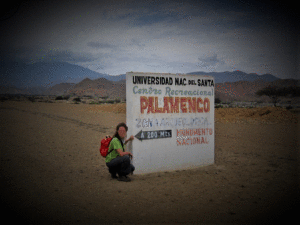
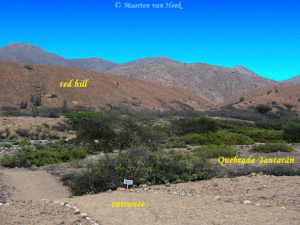
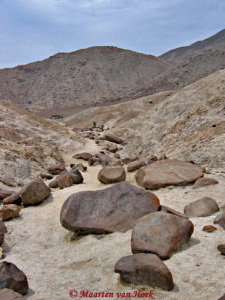
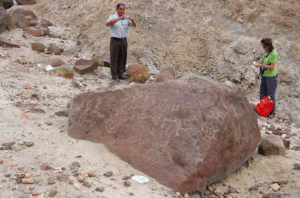
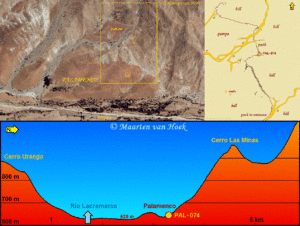
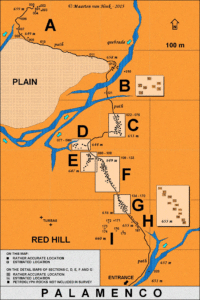
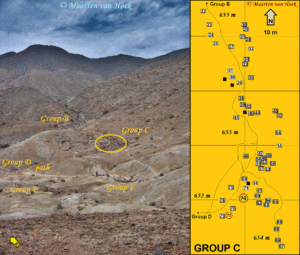
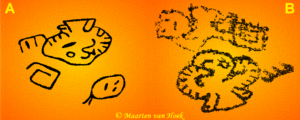
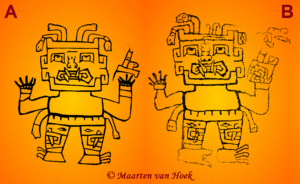


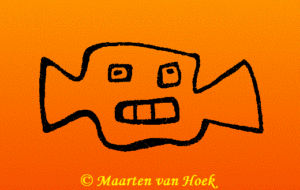
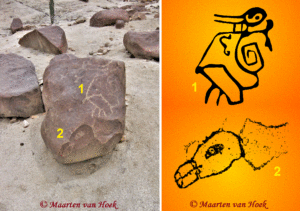
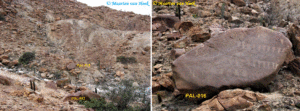
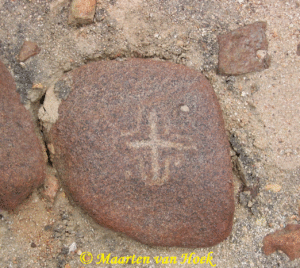
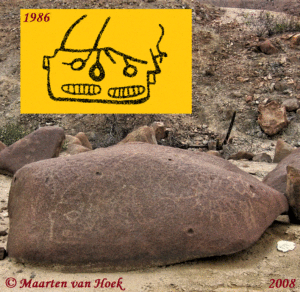
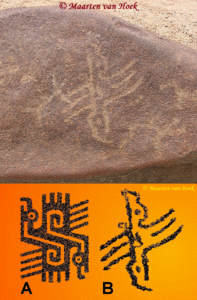
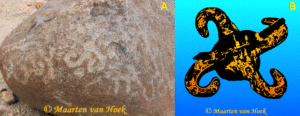
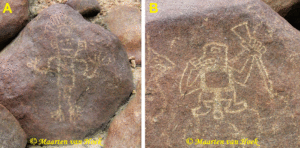
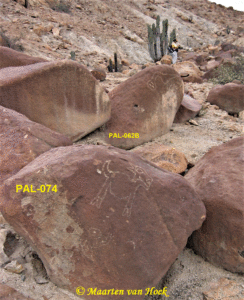
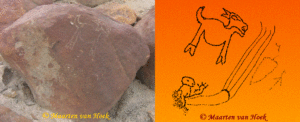
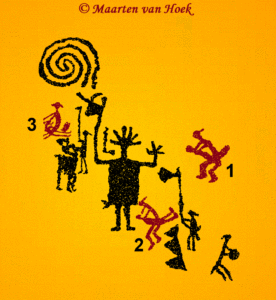

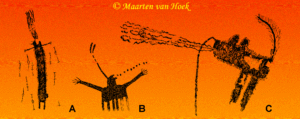
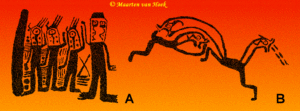
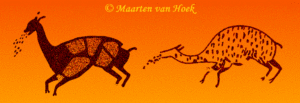
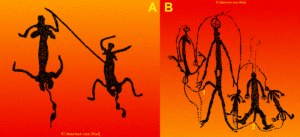
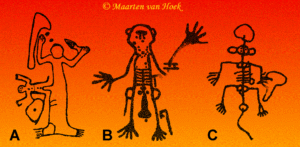


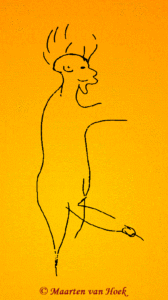
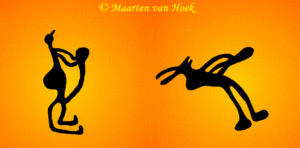














Leave a Reply